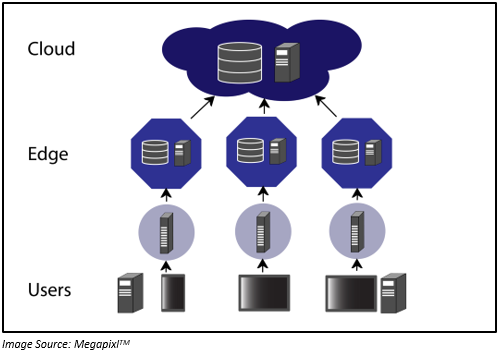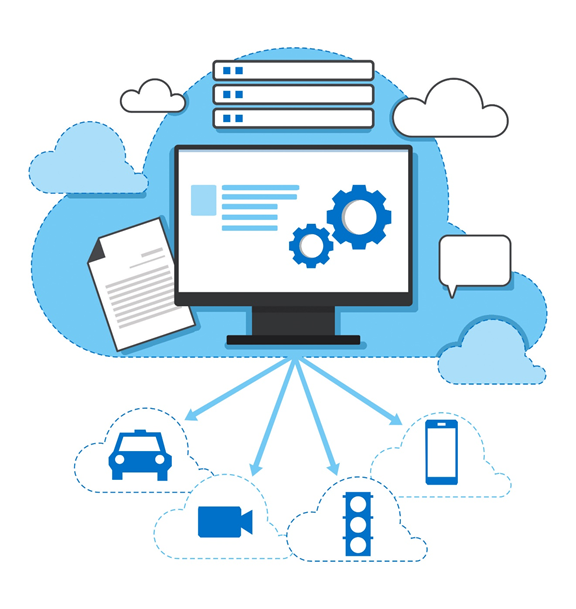What is Edge Computing?
A distributed computing framework, edge computing helps to bring the enterprise applications near to its data sources like IoT devices of any edge devices. Edge computing is an emerging technology, and with the introduction of this technology, it has made it possible to process large volumes of data which is being generated by the devices connected to the internet via IoT.
The main contribution of edge computing is that users are able to pre-process the data collected through these connected devices in an efficient manner before the data is sent to the central server or the cloud.
Architecture of Edge Computing
The architecture of edge computing is a merged structure that expands cloud services to the edge of the network by bringing edge devices in between the terminal devices & cloud computing.
The structure of the cloud-edge relationship is divided into the terminal layer, edge layer and cloud computing layer. Let us take a quick look at the layers.

Terminal Layer
The terminal layer comprises of all types of devices linked to the edge network. It includes a mobile terminal and IoT devices like sensors, smartphones, camera, smart computers.
Edge Layer
Edge layer or the boundary layer forms the core of the three-tier architecture. It is situated at the edge of the networks and includes widely distributed between terminal devices and clouds. It generally comprises base stations, access points, switches, gateways, clouds, and routers. It supports the access of terminal devices downward and saves and calculates the data uploaded by terminal devices. The layer connects with the cloud and uploads the data that is processed to the cloud. As the edge layer is near the user, the data transmission to the edge layer is more appropriate in case of real-time data analysis & intelligent processing.
Cloud Computing Layer
The cloud computing layer consists of various high-performance servers and storage devices that have powerful computing and storage capabilities. It can play a significant role in fields where there is a need for a huge amount of data analysis. The cloud computing centre can store the data permanently of the edge computing layer. It can also carry out the analysis duties that an edge computing layer cannot manage & process tasks that combine global information. Other than this, the cloud module can dynamically adapt the deployment strategy plus the algorithm of edge computing layer as per the control rule.

Image Source: © Kalkine Group 2020
Benefits of Edge Computing
The industrial adoption of edge computing is at the early stage. Despite these, there are some advantages of edge computing. These are:
- It is possible to process the data at the source. For example, data that are highly sensitive can be processed directly instead of getting transferred to the cloud.
- Because of edge computing, there is lower traffic congestion. By this, it means that the system can process the data efficiently near the source. Thus, it reduces the time use of internet broadband.
- Edge computing also reduces network connectivity. In places where network connectivity is a big issue, through edge computing system can function at a remote location with sporadic network connectivity.
- Improved data security: Edge computing eliminates the requirement of sending all the information to the public cloud. It requires additional security of sensitive data.
- When data processing and analysis happens at the edge, the industrial applications could be possible at an improved speed and efficiency.
Real-life examples of edge computing
There are several real-life application of edge computing. Let us look at some of the example and how this technology is beneficial.
- Autonomous vehicle: Autonomous vehicle (AV) technology is a rapidly developing technology that aims to improve driving safety. Autonomous driving enables vehicles to take over every angle of driving and helps the user to move from one place to another without any effort.
The role of edge computing in AV can be felt when the vehicle needs to stop at the pedestrian crossing. Here decision to stop the vehicle should be instant as one cannot wait and rely on a remote server to handle this decision. Also, the vehicles using this technology interact with each other instead of sending the data to the remote server in case of any disaster, natural calamity, or road accident, among others.
- Healthcare Devices: Edge computing technology has a significant role in the health care segment as well. The data of vulnerable patients in the hospital who require instant care can be captured and alert the person in charge of the patient so that immediate action can be taken.
- Security solution: At places of high security and surveillance, edge computing plays an important role. In case of any threat, the security system can identify any chances of threat. These include security surveillance system.
 Please wait processing your request...
Please wait processing your request...